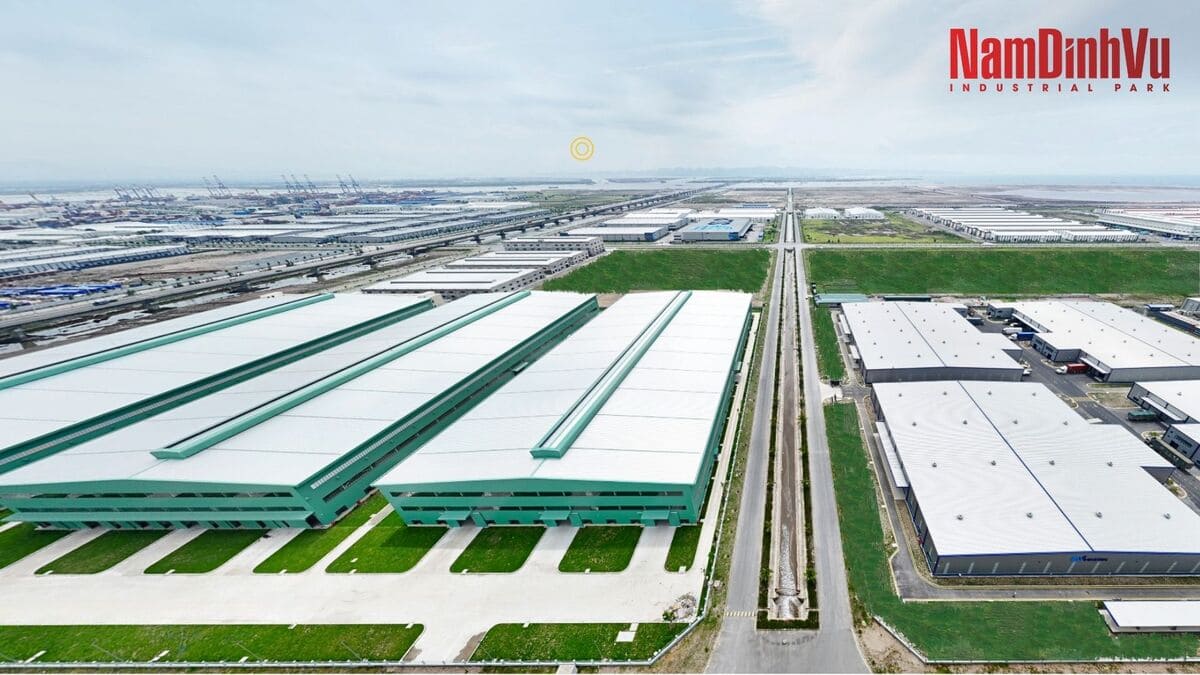Vietnam Industrial Zone
As global supply chains undergo a major realignment, Vietnam has emerged as one of the most dynamic destinations for industrial investment. Driven by new U.S. tariffs, shifting trade dynamics, and the pursuit of cost efficiency, the country is redefining its role as a key manufacturing and logistics hub in Asia.
Vietnam’s Strategic Rise Amid Global Trade Shifts
The new U.S. tariff policy, effective August 1, 2025, has prompted companies across Asia to undergo major strategic realignments. Amid rising trade tensions, Vietnam is rapidly positioning itself as a critical hub for businesses seeking to minimize tariff exposure and enhance operational efficiency.
Early proposals suggested tariffs as high as 46% on exports, sparking widespread concern. However, after negotiations, the final rate was reduced to 20%—still significant but manageable. This adjustment helped stabilize investor sentiment and reignited capital flows into Vietnam, placing the country firmly in the spotlight of regional manufacturing discussions.
While diversification away from China is not new, the latest U.S. tariffs have accelerated this transition. The “China Plus One” strategy—pursued for over a decade—has now gained renewed urgency. Rising costs and complex trade dynamics have pushed corporations to seek alternative bases, and Vietnam stands out for its cost advantages, logistical strengths, and stable policy environment.
“Crucially, the shift is no longer confined to final assembly,” noted Trang Bui, CEO of Cushman & Wakefield Vietnam. “Companies are now considering relocating entire supply chains to Vietnam to benefit from stable policies and re-export tax advantages. This has fueled the momentum for the premium ready-built factory segment, which is fast becoming a strategic asset within Vietnam’s industrial landscape.”
The Evolution of Ready-Built Factories (RBFs)
Once viewed as the weak link in the industrial sector, Vietnam’s ready-built factories (RBFs) have evolved dramatically to meet international standards. From 2017 to the second quarter of 2025, total supply reached approximately 11 million square meters, with an average occupancy rate exceeding 85%. Leading clusters have formed in Ho Chi Minh City (3 million sqm), Dong Nai (2.2 million), Bac Ninh (1.6 million), and Hai Phong (2.2 million).
Modern RBFs are built using prefabricated steel structures, corrosion-resistant coatings, and insulated roofs designed to withstand natural disasters. Ceiling heights range from 4 to 13 meters, while floor loading capacities between 1,000 and 4,000 kg/m² support a wide array of industrial needs. These facilities comply with key national standards for electricity (TCVN 9207:2012), lighting (TCVN 7114:2008), and fire safety (QCVN 06:2022/BXD).

The design is future-ready, with solar-ready roofs, EV charging infrastructure, and an integrated Energy Management System (EMS) for real-time monitoring of energy use and carbon emissions.
Green development has become mainstream across Vietnam’s industrial parks. Solar panels, water recycling, and natural ventilation systems are now standard. Developers are also emphasizing worker well-being, incorporating ASHRAE-standard ventilation, natural lighting, and landscaped zones. “Our goal is to create facilities that boost productivity, protect the environment, and improve workers’ quality of life,” said Tran Quang Trung, Head of Project Development at KTG Industrial.
Vietnam’s Competitive Edge and Outlook
Regional comparisons highlight Vietnam’s advantages. China faces rising costs and trade friction, Thailand and Malaysia struggle with high rents, while Indonesia’s infrastructure remains uneven. In contrast, Vietnam combines low costs, stable governance, and a favorable geographic position, offering strong appeal to foreign manufacturers.
Analysts often compare Vietnam’s current trajectory to China’s early 2000s—low labor costs, rising FDI, and expanding industrial capability. With continued infrastructure investment, supportive FDI policies, and a growing portfolio of green-certified factories, Vietnam is well-positioned to meet global ESG standards and attract high-value industries.
Challenges persist—skilled labor shortages, limited land supply, and regional competition—but ongoing government reforms in vocational training, administrative efficiency, and high-tech incentives signal continued momentum.
In conclusion, the latest U.S. tariffs have inadvertently accelerated the restructuring of global supply chains. With its cost advantages, strategic location, and stable policy framework, Vietnam is emerging as Asia’s next manufacturing powerhouse—driven by modern industrial zones and the rapid evolution of ready-built factory infrastructure.
Source: CUSHMANWAKEFIELD
